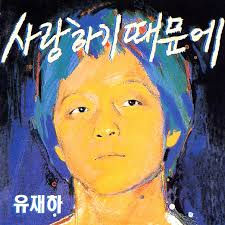How can Piano Reimagine Attack on Titan OST- Akuma no Ko?: Ten Fingers vs. Big Band Vibe
- Yeoul Choi
- Jun 20
- 5 min read
Updated: Jul 4
Animenz’s piano arrangement of ‘Akuma no Ko’ by Ai Higuchi

Attack on Titan is one of the best Japanese anime series released in 2013 and ended with the final season in November 2023. If you are a big fan of this animation, you must be obsessed with the epic animation and music tracks in Attack on Titan, as well as the unpredictable plot and characters. Indeed, countless people have been captivated by the original tracks, and its popularity continues to this day – not only the original tracks but also a wide variety of arrangements has been widely performed.
Today, we will focus on Animenz’s piano arrangement of Akuma no Ko by Ai Higuchi which is the Ending Theme of The Final Season Part 2. The lyrics from ‘Akuma no Ko’ are about Eren’s feelings for Mikasa – a bold but quiet desire to protect and love her, no matter how cruel the world they live in. Higuchi’s voice and tone convey this feeling very well along with the powerful band and the extremely rich orchestral sound.
<The original version of Akuma no Ko from Attack on Titan OST>
<The piano arrangement by Animenz>
Animenz’s piano arrangement successfully captures the essence of Higuchi’s vocal tone and the original song’s emotional atmosphere, while incorporating his own distinctive style and refining it into a sophisticated pianistic interpretation. The performance video has reached over 4 million views on YouTube. In this analysis, we will examine how he translated the original piece—characterized by its fusion of band and orchestral elements—into a solo piano performance.
1. Introduction and the colors of voices
While the original version starts with Higuchi’s voice without any intro, there is an Introduction part in Animenz’s piano version, featuring four measures of the repeating ostinato melody (a repetitive musical idea or harmonic idea that is usually continually repeated throughout the piece) that is supported by the underlying chromatic bass line (B-C-C#-C) moving at the speed of half note. This ostinato bass continues by the end of section A.
Animenz uses various tones of each voice in a different register to express Higuchi’s singing tone. The first verse of the original version features Higuchi’s calm and stable tone. To capture this, Animenz placed the vocal melody (foreground) in the lower range (tenor register) than its original pitch, while positioning the ostinato melody in a relatively higher register. Right after the ostinato melody comes with the octave unison, the verse continues at the higher range (alto). Now, we can tell the timbral difference between two voices - tenor and alto. Indeed, Amimenz took advantage of the various registers and 88 keys of piano instruments to reimagine the subtle tone of the human voice.
2. Three technical ideas to express the original vibe of full band sound
Is it possible to bring full band sound to the piano? Yes! You will just need ten fingers to realize it, as long as you have Animenz’s piano version. Let’s see how Animenz brought the full band sound to the piano arrangement.
The Use of Three-hand Technique
The bridge part lettered G can be seen as the first climax. Animenz used three-hand technique here for extreme sound effect. Three-hand effect (or three-hand technique) is a means of producing the impression that performer is using three hands to play on the piano even though she use only two hands. For example, He chose to place the 16th notes of background melody in a much higher register, and we can see foreground melody in a middle register. Also, the powerful octave bass movements are in the lowest register. In this way, a wide range between the voices makes the piano arrangement sound like a full orchestra more effectively.
The Musical Design of Background
Animenz’s piano version skillfully utilizes the musical design of accompaniment figuration to preserve the character of the original song as much as possible. In Letter E, for instance, the inner voice carries the ostinato melody while the right hand presents the main vocal line. As the piece intensifies, chord blocks are combined with a subito forte dynamic to heighten the energy. Beginning at Letter F, the left hand takes over with an arpeggiated accompaniment, while the right hand plays the foreground melody using chord blocks. The arpeggios play a crucial role in gradually building tension and atmosphere, leading into Section H, where the very fast and passionate scalar passages enhance the brilliance of the chorus. As previously discussed, the ability to express melodic lines through multiple voices and to build intensity using a variety of textures—all within the scope of ten fingers—is a unique and compelling aspect of piano music.
Rhythm and Note for Drum Solo


In Section D, following the ostinato melody, the right hand plays repeated F-sharps that require rapid finger shifts while maintaining a pianissimo dynamic This section corresponds to a passage in the original song where the drums perform a fill-in featuring cymbal sounds played almost like a solo. To reflect the rhythmic feel of the original drum fill-in, the passage presents a rhythm that gradually accelerates—from dotted notes to sixteenth notes, to quintuplets—and includes the instruction "ad lib." (short for ad libitum, meaning “to be played freely”). Additionally, to emulate the distinctive sharp timbre of the cymbals, the passage features high-register F-sharps on the piano.
3. ‘Pianism’ on Animenz’s arrangement
Sections C and H represent the most virtuosic moments in this arrangement. For those who purchase the sheet music after only hearing the earlier parts of the piece, these sections may come as quite a surprise. They are technically demanding and require substantial practice, especially given the presence of five sharps in the key signature, which calls for intensive scale training. However, if mastered, these passages can be performed with exceptional brilliance.
In contrast, the extended ending—newly added by Animenz—offers elements that performers are likely to enjoy. In the original song, the final section corresponds to the latter half of Section I, where the piece typically ends. Instead of concluding there, Animenz elongates the ending with diminuendo (meaning "gradually softer") and arpeggios in sixteenth notes across both hands in the final two bars of Section I, before introducing newly composed Sections J and K.
These additional sections serve to bring resolution to the musical fantasies developed so far. For pianists who will be playing this version, these sections provide a moment of both relief and reflection—a contrast to the intense virtuosity that came before. At the same time, by revisiting the chorus melody, which is a central melodic theme in Akuma no Ko, the mood of the piece is once again evoked, offering a satisfying and expressive conclusion. If you want to enjoy playing epic orchestral sound of the Attack on Titan Ending Theme with your fingers, please check this link to buy sheet music!
You might also like

Over 300,000 sheets with various songs and instruments, and 15 different local payment methods, MyMusicSheet provides the most convenient platform service for those of you who love music.



Comments